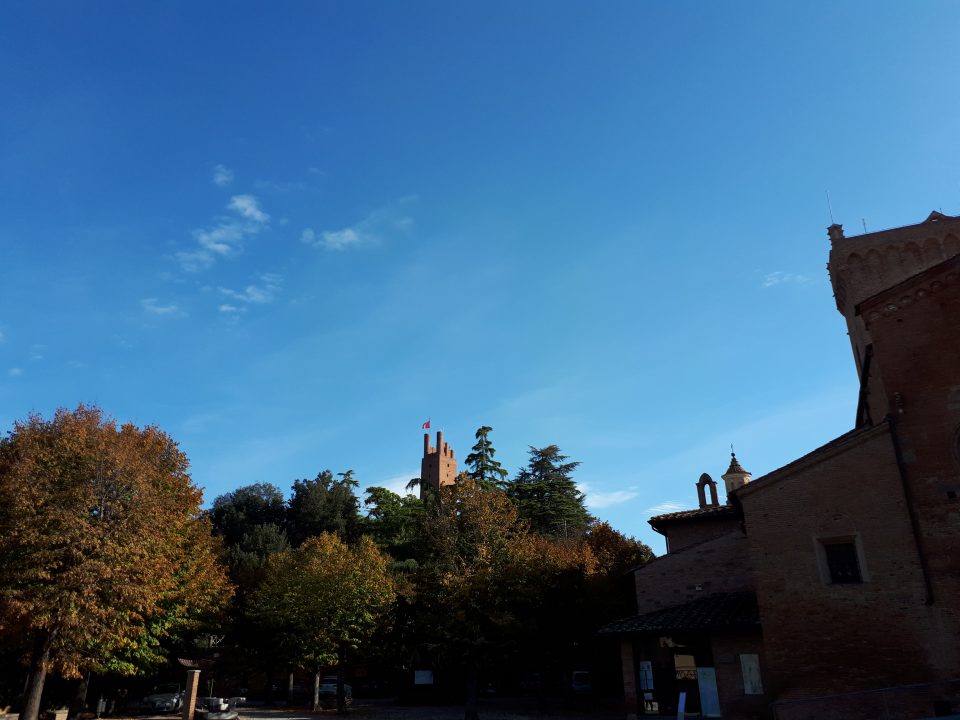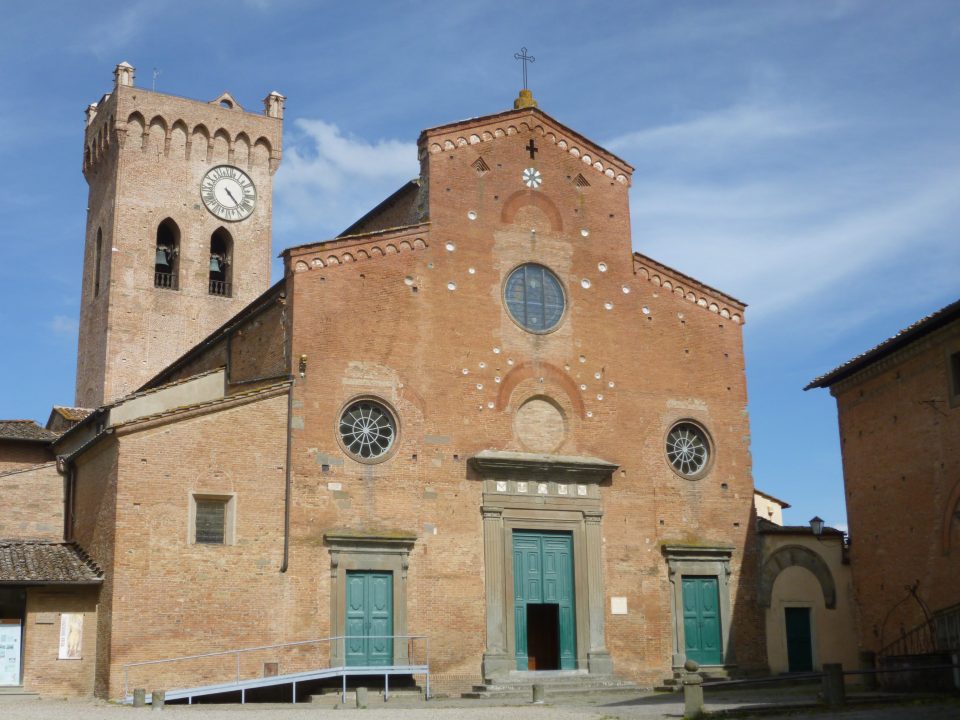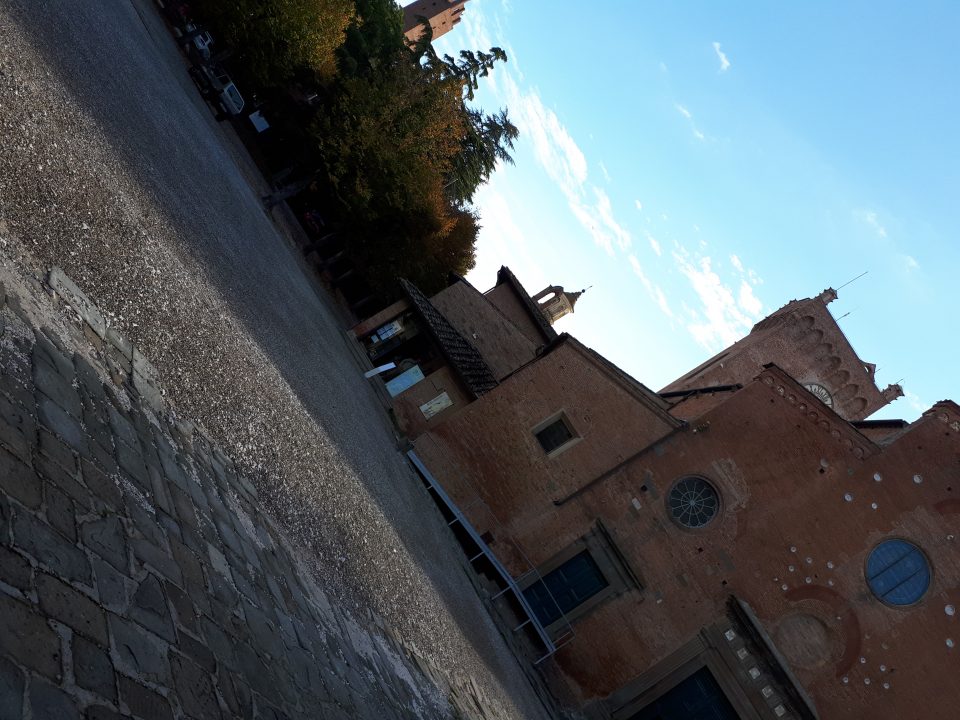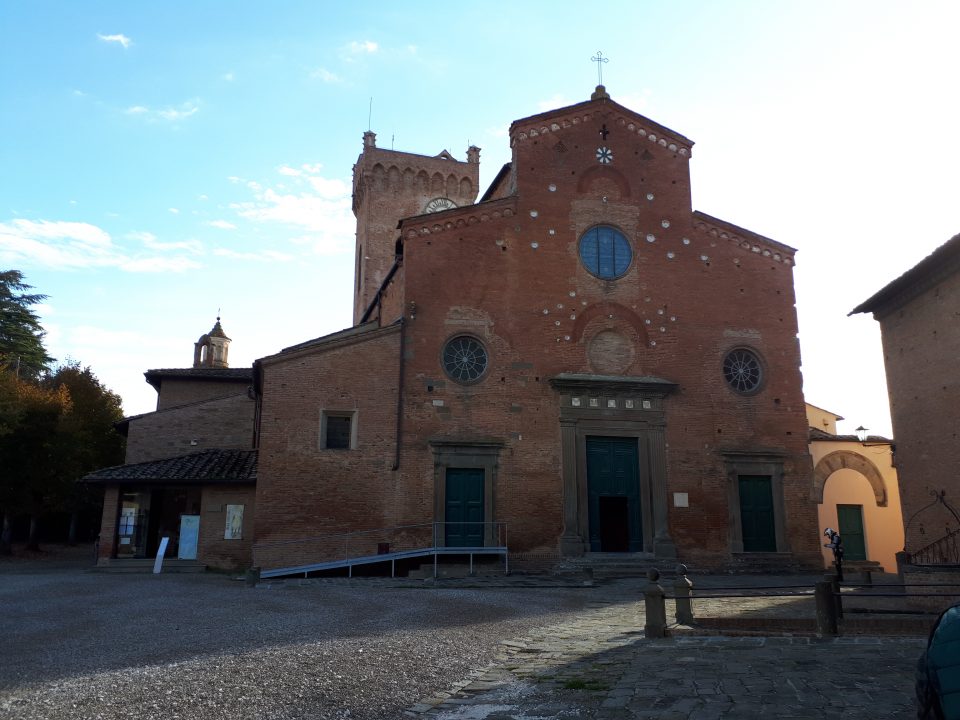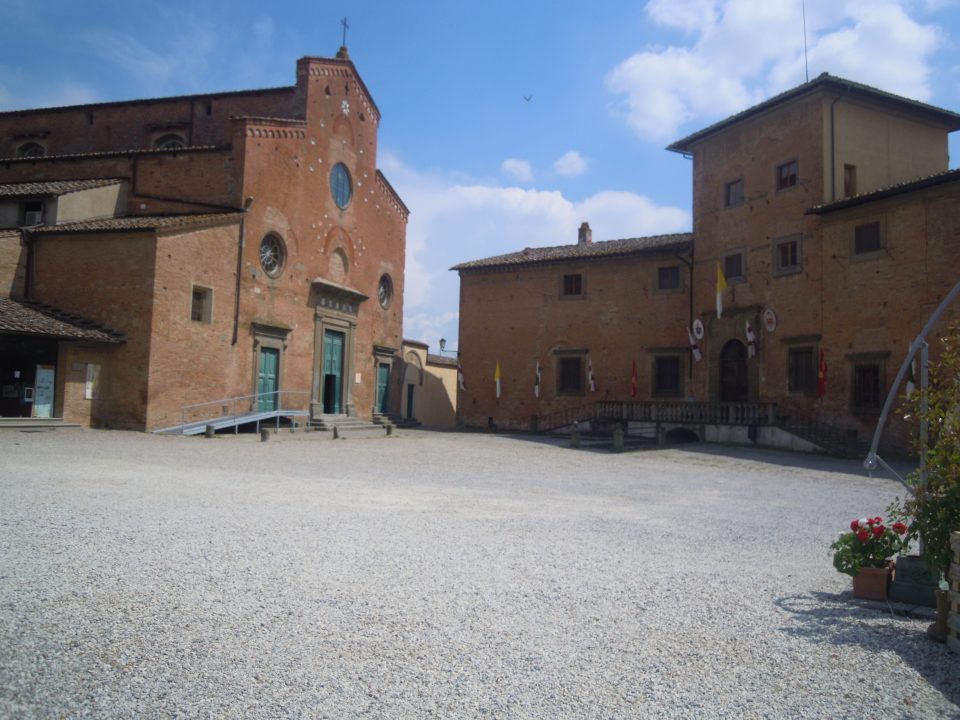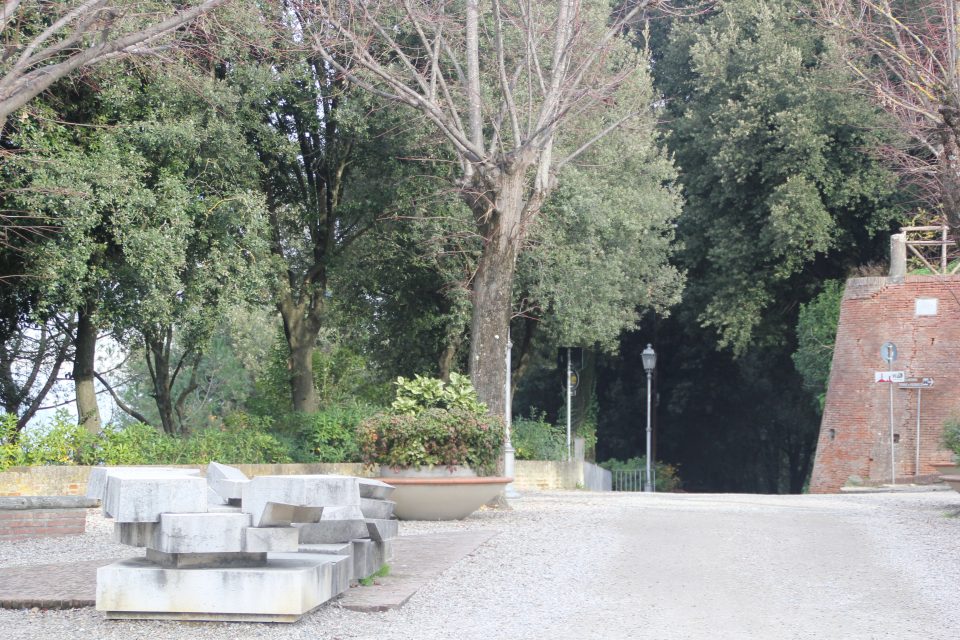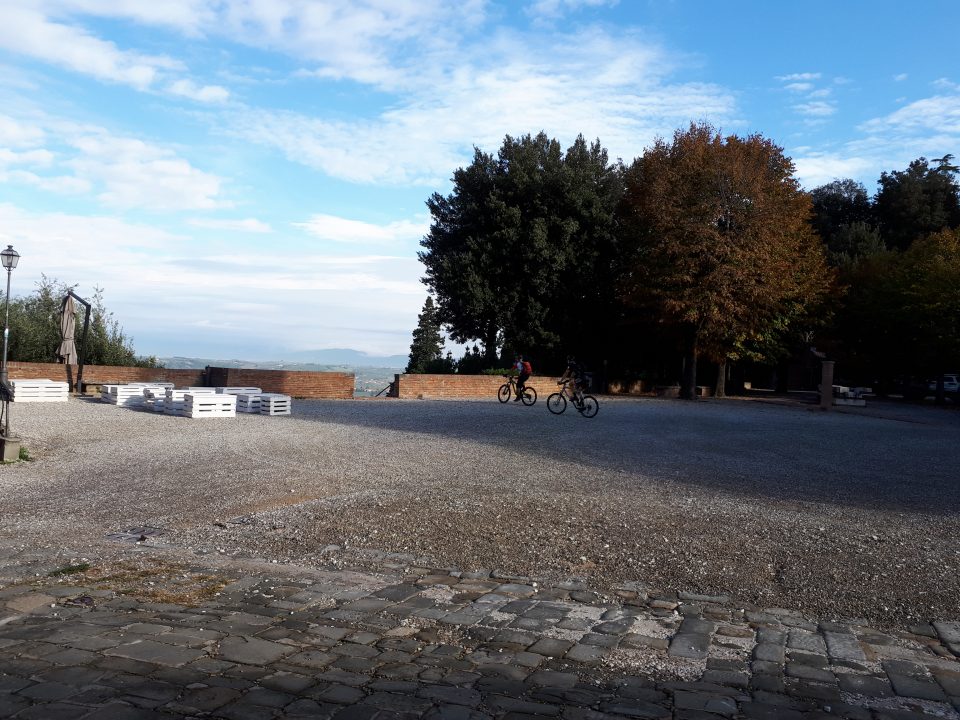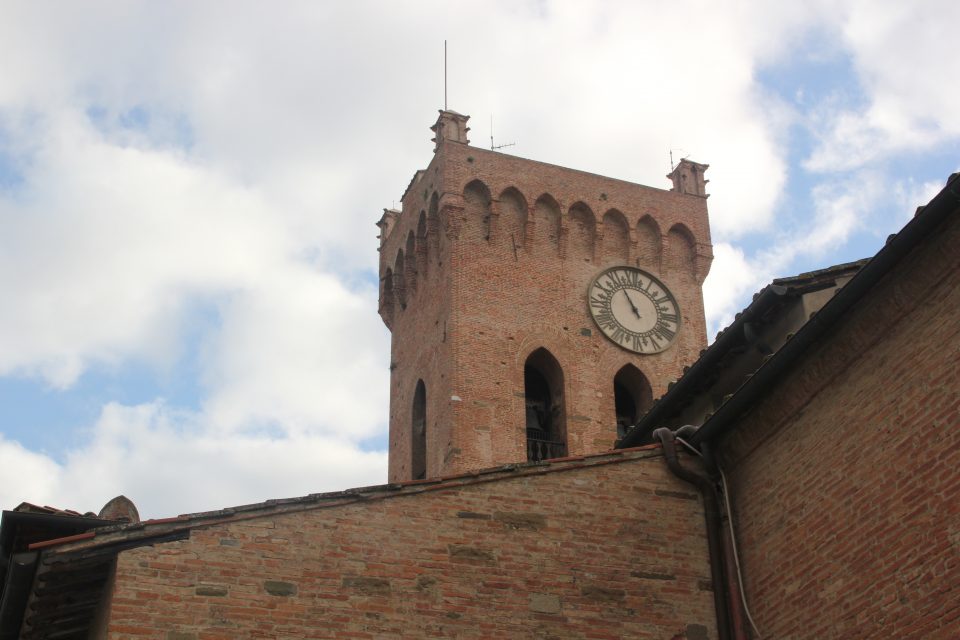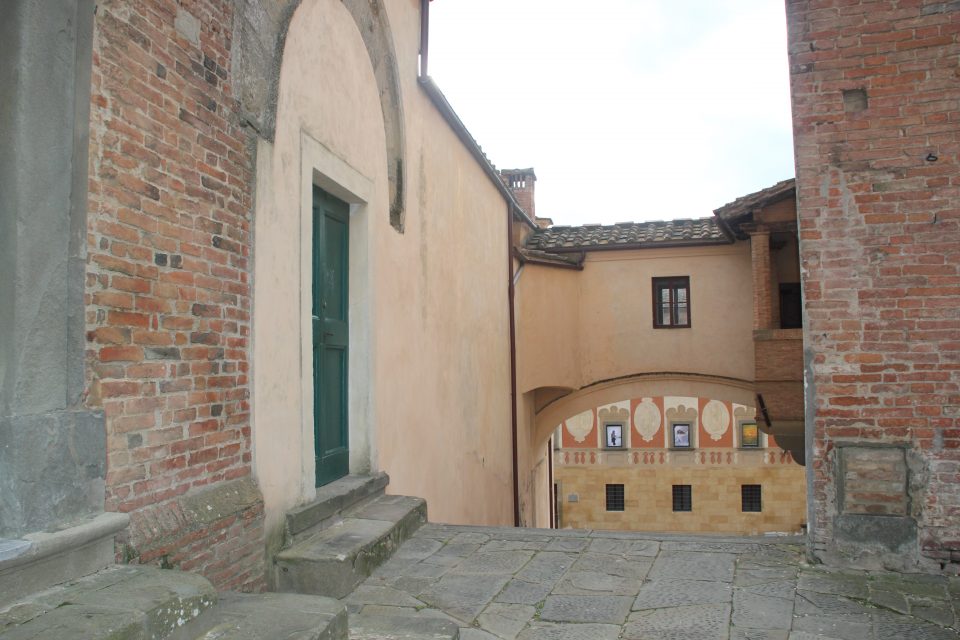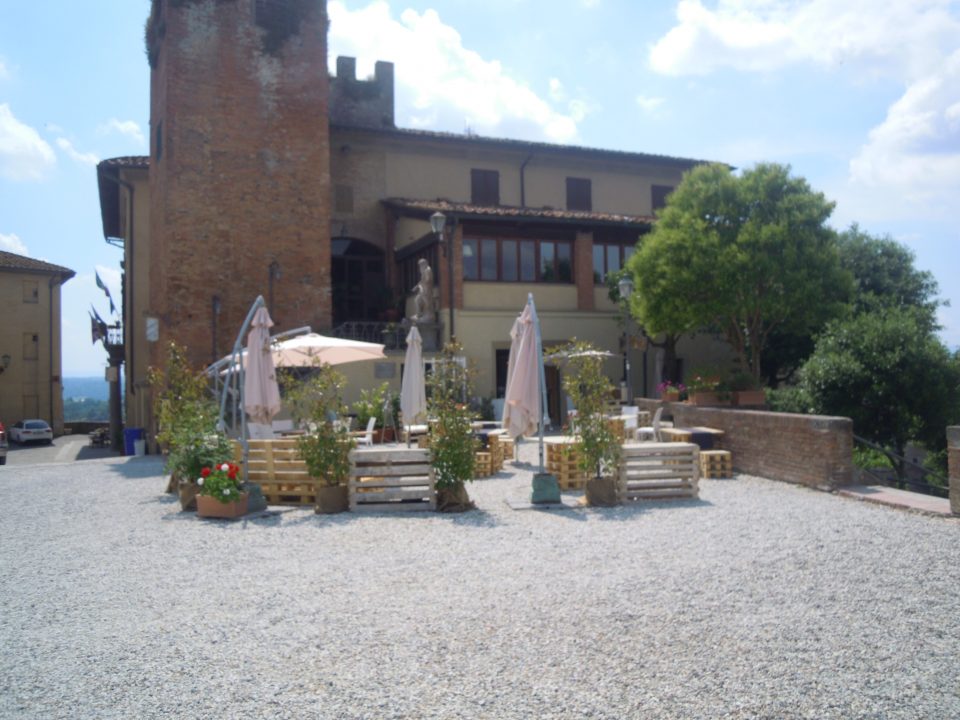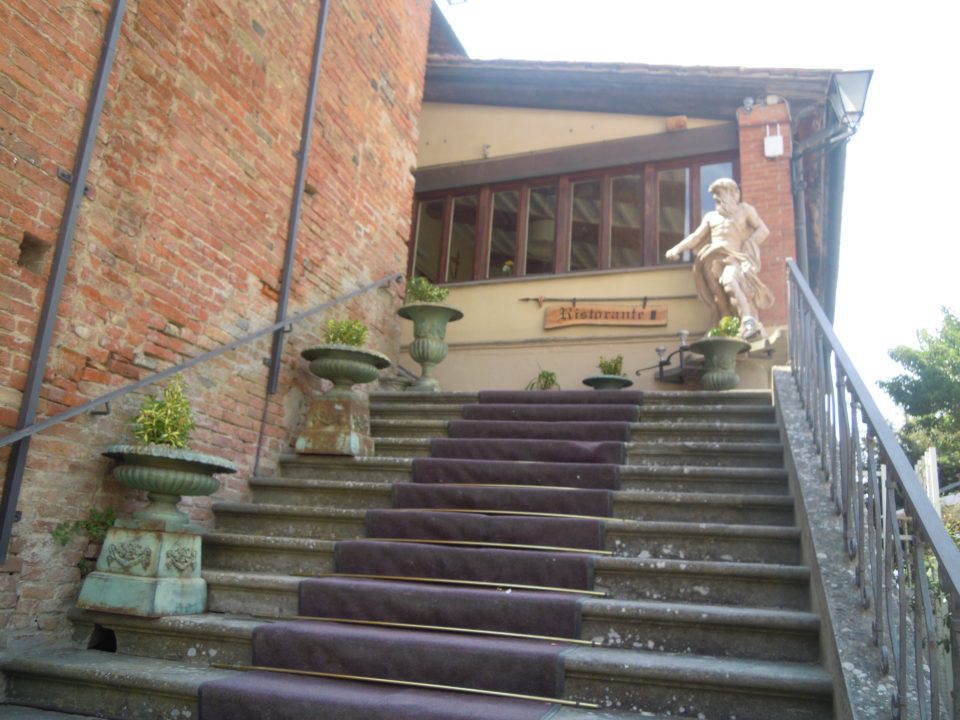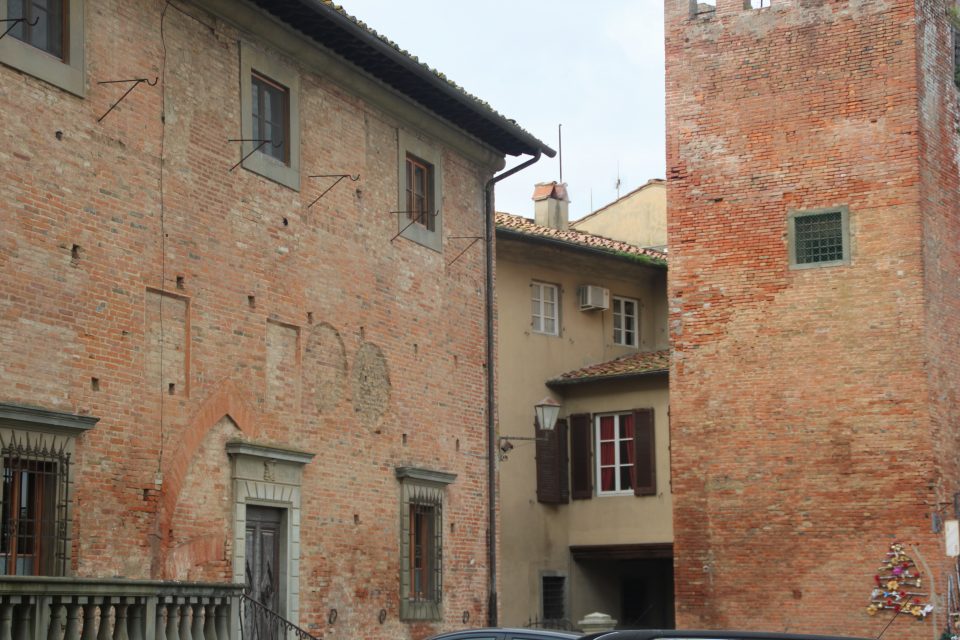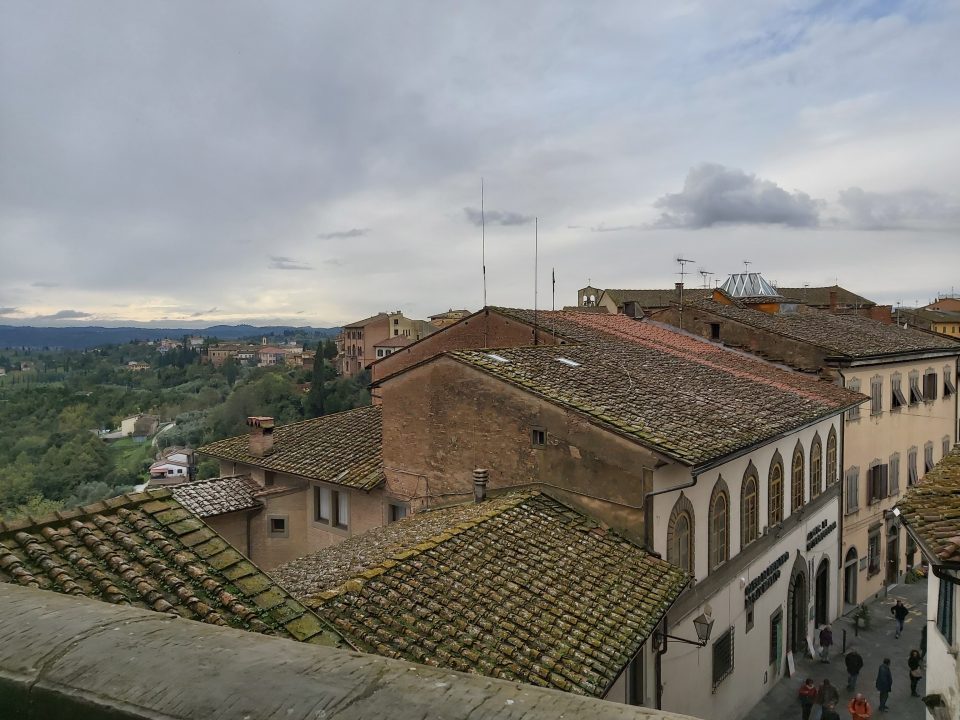In Piazza del Duomo we can admire the Cathedral, which is dedicated to Santa Maria Assunta and San Genesio.It was built in the 12th century and has a beautiful Romanesque façade, which also exhibits Gothic and Renaissance architectural elements.
The Church has a Latin cross plan with three naves and houses many works of art such as a 17th-century wooden crucifix by Iacopo di Giuliano Sani, Giovanni Battista Sandrini’s baptismal font, four marble busts of famous men from San Miniato: Iacopo Buonaparte, Pietro Bagnoli, Giovacchino Taddei and Francesco Maria Poggi and frescoes by Antonio Domenico Bamberini and Francesco Lanfranchi.
Its Bell Tower, called Matilde Tower, has an asymmetrical clock and dates back to the 12th century. Its name refers to the Countess Matilde of Canossa, who was probably born in San Miniato.
Next to the Cathedral there is the Diocesan Museum of Sacred Art housing paintings by famous artists such as Iacopo Chimenti called “L’Empoli”, Francesco Morandini called “Il Poppi”, Lorenzo Lippi, Giovanni Bilivert, Cenni di Francesco di Ser Cenni, Neri di Bicci, Iacopo di Mino del Pellicciaio and Lorenzo Monaco.
In Piazza del Duomo we can admire the Imperial Vicars’ Palace, which dates back to the 12th century and was Frederick II’s residence, and its Tower, which was used as a prison.
The Palace was the seat of the Imperial Vicars and emperors such as Frederick I Barbarossa, Herny IV, Ottone IV and Frederick II lived here.
Matilde di Canossa, who was the daughter of Bonifacio IV, ruler of many counties such as Reggio, Modena, Mantua, Brescia and Ferrara, and Beatrice of Lorena, one of Frederick II’s daughters, was born in this palace.
The Palace became the seat of the Florentine Court and its prison in the following centuries.
Gostanza , the witch from San Miniato, was imprisoned here.
Gostanza was a 50 year-old widow who lived in San Miniato about 500 years ago. She was a poor peasant and earned her living as a midwife.
The misadventures of this woman started in the Castle of Lari, near Pisa, in 1594, when two women and two men charged Gostanza da Libbiano with provoking several babies’ death by using witchcraft.
Gostanza was interrogated in a trial, which took place in San Miniato, and she admitted she had used ointments and placed a candle on women in labour as a symbol of good luck but she denied she had provoked new-borns’ death. The inquisitor sentenced her to the “torture of the ropes”.
After being hung by a rope which stretched her arms she admitted she had practised witchcraft upon several people.
In the following days the poor woman began to confess more and more in order to avoid new tortures. She even admitted she had had a relationship with several demons and she had taken on the form of a black cat, sucked children’s blood and stolen and fried consecrate Hosts in order to offer them as a sacrifice to a demon called “Polletto”.
She was going to be burnt at the stake but on 19th November 1594, Dionigi da Costacciaro, a new Florentine inquisitor, realized her confessions had been invented by a human mind and not by the devil and her confessions were just lies so he decided to keep Gostanza in prison for a few days and put an end to her torture.
The inquisitor interrogated Gostanza on different occasions and finally on 24th November he asked her if she was willing to swear that her confessions were true.
The widow explained that they were all lies and admitted she had confessed everything just in order to put an end to her torture and die. The trial came to an end with Gostanza’s absolution and the acknowledgment of her innocence on 28th November. The inquisitor ordered her not to use potions any longer and move to another town.

